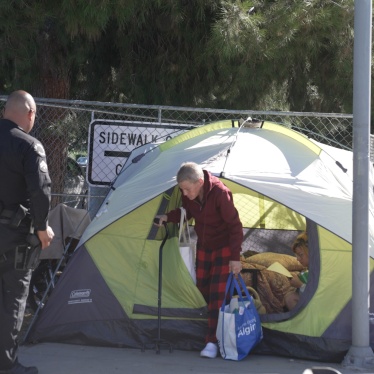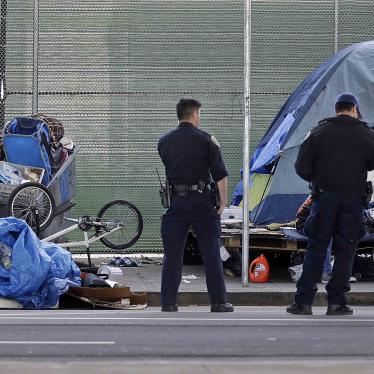“There’s no more excuses,” said California Governor Gavin Newsom at a recent press conference, urging cities and counties throughout the state to ramp up the cruel and ineffective clearing encampments of unhoused people living in their jurisdictions.
The “excuses” Newsom referred to were the federal court cases that said governments could not punish unhoused people for living in public spaces if there was nowhere else to go. While these cases, Martin v. Boise and Grants Pass v. Johnson, did not prevent cities from criminalizing people for being in public spaces, they established a moral baseline that punishing people for their unhoused status was wrong unless there was shelter available to them. The U.S. Supreme Court, in a June 28 ruling, removed that narrow limitation, paving the way for government authorities to ticket and arrest people and to destroy their property without having to offer any other options.
Following the Court’s ruling, Newsom issued an executive order requiring state agencies under his authority to destroy all encampments and urging cities and counties to do the same. Now, he is threatening to withhold state funding from local governments that do not tear down communities where unhoused people live.
The criminalization of unhoused people is nothing new. It has been the default policy of cities like Los Angeles for decades. Advocates and unhoused people have consistently pointed out the devastating consequences over the years. Human Rights Watch’s new report describes this practice in Los Angeles and the harm it causes both to the individuals and communities involved, and to any hopes of resolving houselessness.
As the primary author of this report, I witnessed numerous encampment destructions or “sweeps” of the type Newsom is ordering. During one, in an industrial area just by the freeway south of Skid Row, I watched Sanitation Department workers demolish tents and structures where about thirty people had sought refuge. Police taped off the area, preventing the residents from going in to retrieve their property.
Those displaced from the encampment said that they lost clothing, bedding, papers, work tools, medications, identification, and other essential property. They had been given just a few minutes to pack and move.
Police officers at the scene said that everyone there had been offered “housing,” just as Newsom now falsely implies that shelter or housing is readily available. Residents of the encampment denied being made such offers, and Human Rights Watch analysis of Los Angeles Homeless Services Authority data revealed that only a handful of shelter offers had been made at that location that day and in the many months leading up to it.
The people from this encampment were forced to scatter. Some joined other encampments nearby, which were similarly destroyed in the next few weeks. Others went off on their own.
Leaving the community of an established encampment makes one more vulnerable to violence, illness, and overdose. It makes one harder to reach by service providers who might have housing available. It undermines social bonds crucial to survival. And it does nothing to solve houselessness.
Nobody wants to see encampments. This destruction and scattering of unhoused people may remove them from sight, but it’s not a real solution to houselessness. Our research confirms what advocates and unhoused people have long known—that housing, not temporary shelter and certainly not destructive sweeps, is the only way to end houselessness.
In California and across the country, the way forward is to produce more affordable units, preserve existing affordable units, provide services along with housing for those who need it, and keep people in their homes.






